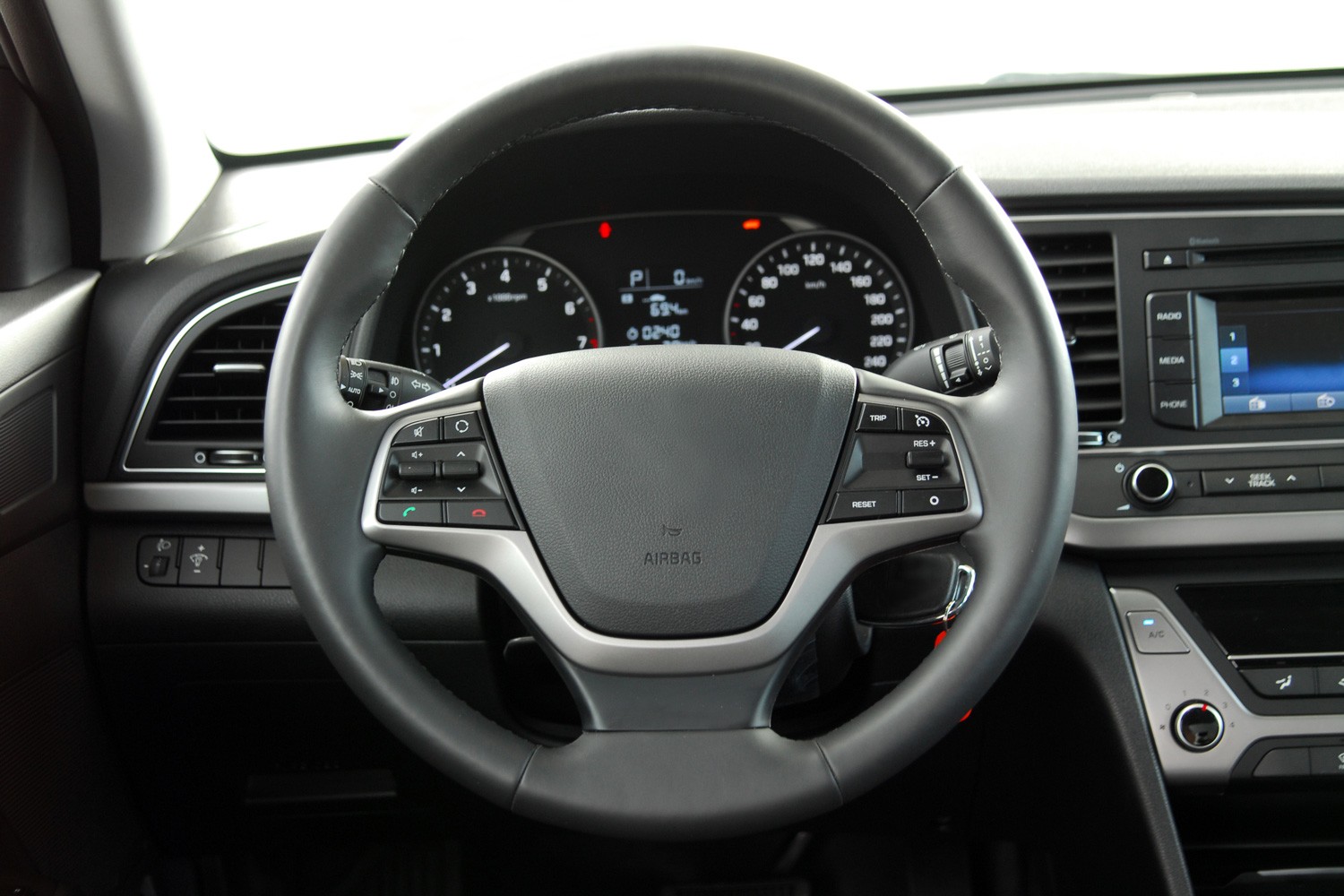A seemingly comfy drive can become full of worry when your steering wheel shakes when accelerating. What could be wrong with your vehicle if this problem occurs? We researched this concern for your convenience, and here’s what we found.
If your steering wheel frequently shakes or vibrates while accelerating, it could mean several different things. For instance, your car might have a sticky brake caliper, or you might need to replace your tires with better-quality models. Troubleshoot your vehicle to identify the correct source of the problem so you can continue with the appropriate course of action.
So continue reading as we talk about the possible reasons why your car’s steering wheel shakes when accelerating. We’ll also discuss some possible solutions that may help fix the main problem based on the results of your troubleshooting.

What Causes A Car’s Steering Wheel To Shake While Accelerating?

Generally, a car's steering wheel shakes when the vehicle drives over uneven roads. But this concern may continue to persist even when driving on relatively flat highways. If so, an underlying issue might be the cause of this unwanted shaking.
Some possible causes of the steering wheel shaking while accelerating are:
Sticky Brake Caliper
Also called a hanging brake caliper, this issue often occurs because of mechanical failure. This particular problem might occur because of complications like:
- Trapped brake pad shims
- Worn brake hose
- Bolt malfunction
- Unlubricated or dirty caliper piston
Once the brake caliper hangs or sticks because of these issues, the car’s steering wheel will often vibrate. The extent of this unwanted movement may depend on the severity of the faulty part. This issue might also appear as you’re accelerating to between 45 to 50 miles per hour.
Aside from the steering wheel shaking, your vehicle may also experience other concerns, such as:
- Low brake pedal
- Sudden deceleration
- Poor fuel economy
- Wheels overheat
- Brake fluid leakage
Poor-Quality Tires
Generally, typical car tires last anywhere from 50,000 to 60,000 miles on average. But poor quality models may start wearing out before they reach that period.
The result is an unbalanced and/or misaligned set of tires, causing the steering wheel to shake when accelerating, turning, or during other standard vehicle movements.
You might also be wondering how long spare tires last. If so, read this post on the subject to learn more: How Long Do Spare Tires Last? [And How Far Can You Drive On Them]
Faulty Suspension System
Take note that a vehicle’s suspension system typically functions by absorbing the shocks while on the road, promoting a smooth drive. However, a faulty or worn suspension system may cause unwanted bouncing regardless of the vehicle’s movement on a flat or uneven surface.
It’s important to note that the typical car suspension system will last about 10 years, particularly with strict maintenance practices. But using your vehicle as a workhorse may make the suspension system last only about half the standard period.
In addition to a shaking steering wheel, faulty suspension systems may also result in other concerning things like:
- Sudden drift while cornering or turning
- The car tilts to one side
- Frequent bouncing after braking
Worn suspension systems might also make your wheels squeak while driving. But this particular problem might also come from other faulty car assemblies. Read our post highlighting this concern to learn what could be wrong with your vehicle: Wheels Squeaking When Driving—What Could Be Wrong?
Worn Wheel Bearings

Take note that wheel bearings are the first connection point that attaches to the dynamic and static assemblies of a car. The bearings create a rolling motion to help reduce unwanted friction, which might otherwise cause overheating and other concerns.
Typically, the typical wheel bearings should last approximately 85,000 to 100,000 miles before they need replacing. Once the bearings reach or go over this range, the steering wheel may shake or vibrate when your car accelerates.
You might be able to diagnose if the wheel bearings are about to go bad if you hear noises like humming, growling, or squealing. Driving your car may also feel like it’s going through rough terrain even when you’re on the highway.
Loose Steering Wheel
A loose steering wheel may shake while you accelerate or turn your vehicle. If you encounter this problem, it could originate from:
- Faulty suspension system
- Worn attachments that connect the rack or steering box
- Loose links that attach the front wheels and the steering box
Take note that some movement from the steering wheel is relatively normal, even when the car is idle. However, think about troubleshooting your vehicle if your steering wheel moves significantly without human interaction.
How Do I Fix A Steering Wheel That Shakes When Accelerating?

In this section, you’ll learn some possible solutions to eliminate the unwanted shaking from a steering wheel based on your troubleshooting efforts:
Replace The Brake Caliper
As with relatively any vehicle part repair or replacement job, it’s important to ensure proper safety to reduce the risks of accidents and injuries. Despite replacing a brake caliper being a fairly DIY-friendly task, failure to prepare for the operation may lead to consequences.
For instance, make sure you’re using a stable jack and high-quality jack stands when lifting your car off the ground. Also, wear safety gear like gloves, goggles, a face mask, and long-sleeved clothing to prevent dust and other particles from irritating your eyes, nose, throat, and/or skin.
After completing the necessary preparations, continue this procedure by following these steps:
What You’ll Need
- Socket wrench
- Replacement brake caliper assembly
Step-By-Step Guide
- Raise the car with the jack and stabilize the setup by using jack stands.
- Remove the wheel assembly to expose the brake caliper.
- Unscrew the bolts from the broken or worn brake caliper assembly. Remove the setup afterward.
- Install and secure the new brake caliper.
- Return the wheel assembly and lower the vehicle to the ground.
- Test drive the car to check if the steering wheel still shakes when accelerating.
Check out these replacement brake calipers on Amazon.
Take note that brake caliper architectures and designs are often unique for each car model. Consult your owner’s manual or talk to your car dealer or manufacturer to identify the correct brake caliper model to purchase for your specific vehicle.
You can also watch the video below to gain additional insight into this replacement procedure:
Install New Tires
Professional tire installation roughly costs $13 to $45 depending on certain elements like the size of the tire to place onto your vehicle. You can save money that you would otherwise spend from these expert services by doing the installation process by yourself.
It’s necessary to mention that the following procedure assumes that you already purchased compatible tires for your vehicle. With your new high-quality tires ready, continue this process by going along with these steps:
What You’ll Need
- Jack
- Lug nut wrench
- Tires with wheels
- Brick or large stone
Step-By-Step Guide
- Carefully park your car on a flat and level surface.
- Engage the parking brake.
- Loosen the lug nuts on the faulty wheels.
- Place the brick or large stone at one of the front tires to prevent the vehicle from slipping.
- Lift the car with the jack.
- Remove the loosened lug nuts. Then, remove the wheel assembly.
- Install and secure the wheel-mounted tire, and lower the vehicle.
- Remove the brick or stone.
- Take your vehicle on a test drive to check if the steering wheel problem persists.
Check out this product on Amazon.
Watch the video below to look at a visual representation of the steps mentioned above. This short clip shows how to change your current tire with a spare model, but the process should still be relatively similar to installing new tires:
You may still need to balance and align your newly-installed tires after this process. Read our post on the importance of balancing tires to learn additional details on this particular topic.
Is It Safe To Drive With A Shaking Steering Wheel?

It’s relatively safe to drive while your car’s steering wheel shakes. However, it’s best to have this concern checked and fixed as soon as possible. Always bear in mind that any unwanted movement from your vehicle may put you, as the driver, and your passengers at risk of accidents and injuries.
How Much Does It Cost To Fix A Shaking Steering Wheel?
Expect to spend between $300 and $450 to repair a shaking steering wheel and the underlying cause of that problem. Keep in mind that the expenses can vary based on factors like the issue’s source, location of the repair shop, and professional labor charges.
Final Words
A steering wheel that shakes while accelerating the car might be the result of an underlying cause. Some of the possible reasons for this concern include a sticky brake caliper, poor-quality tires, or a faulty suspension system. Make sure to troubleshoot your vehicle properly so you can ensure that your steering wheel doesn’t vibrate on its own.


